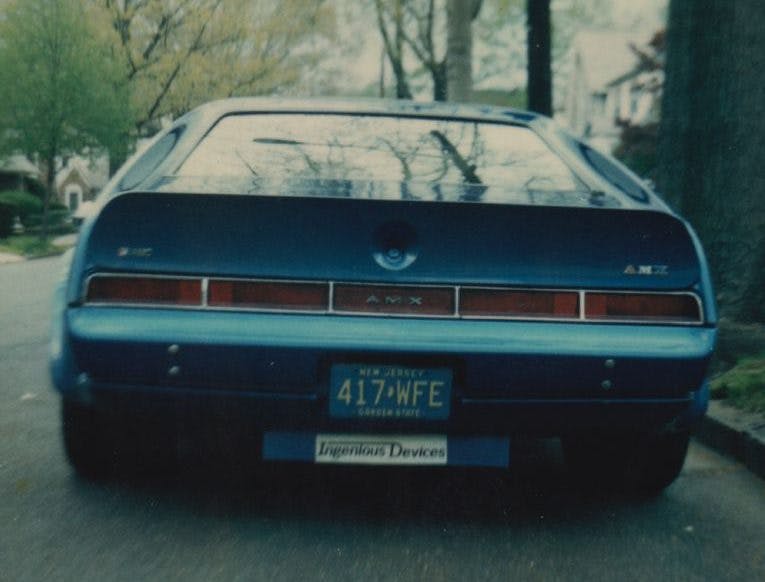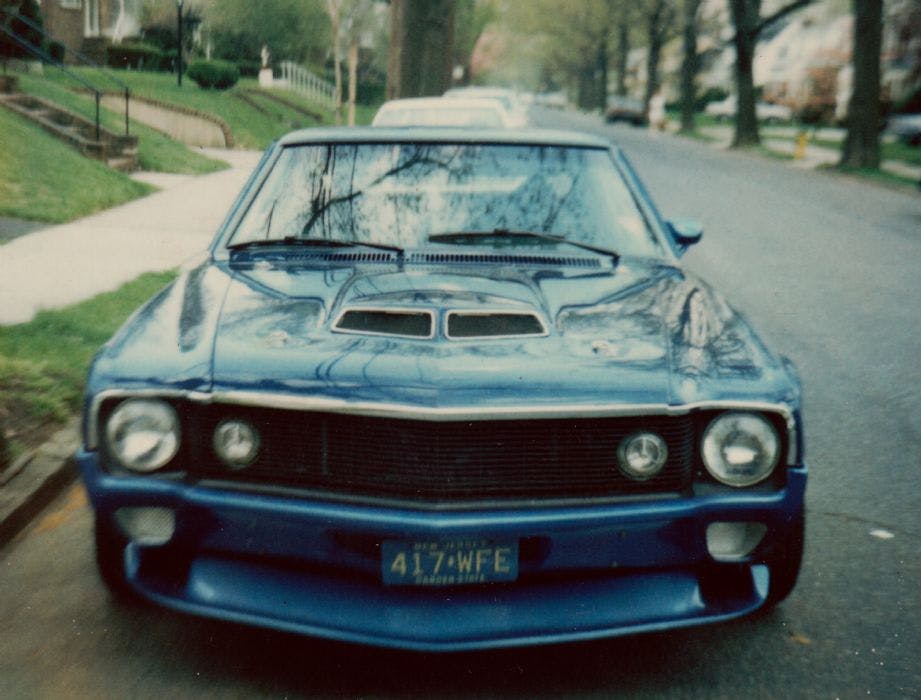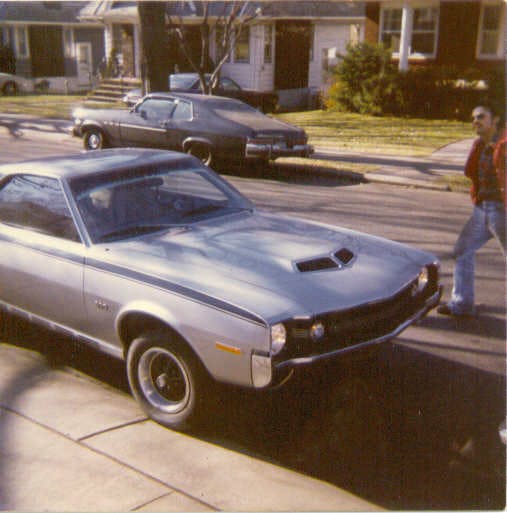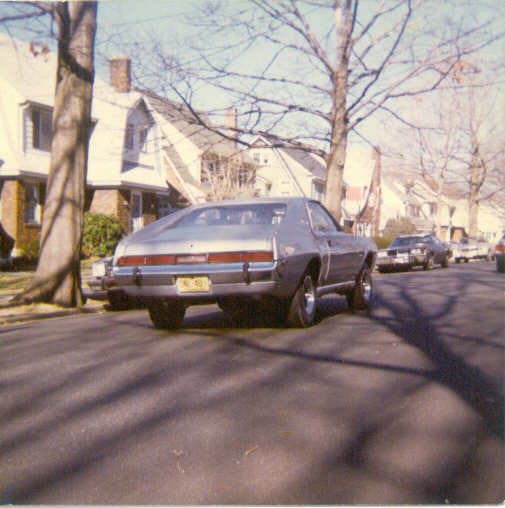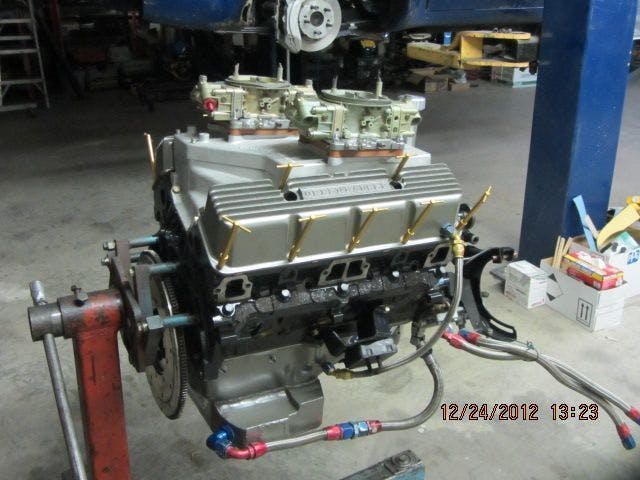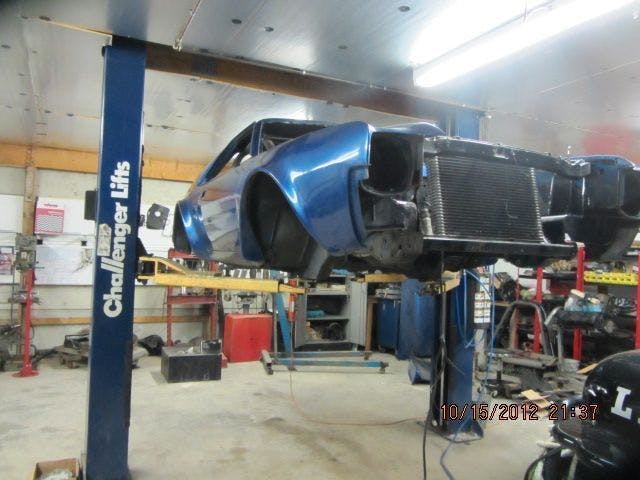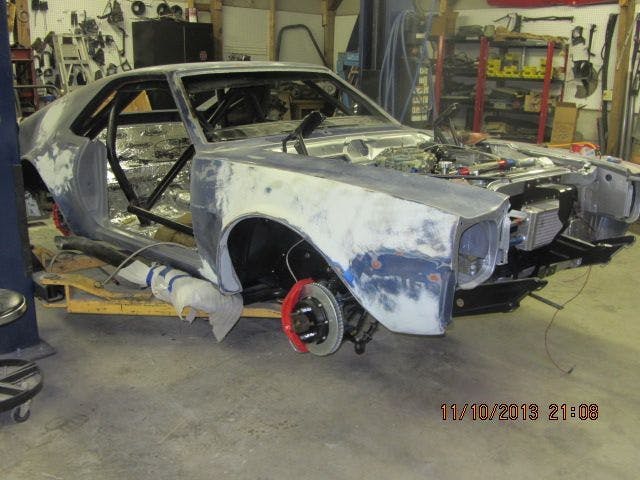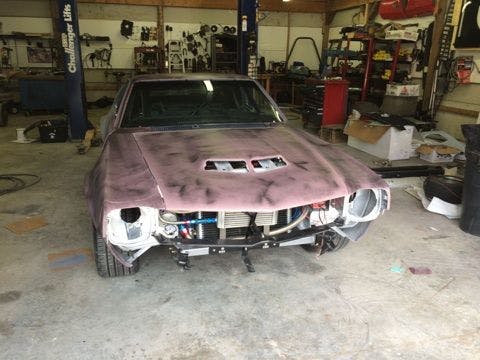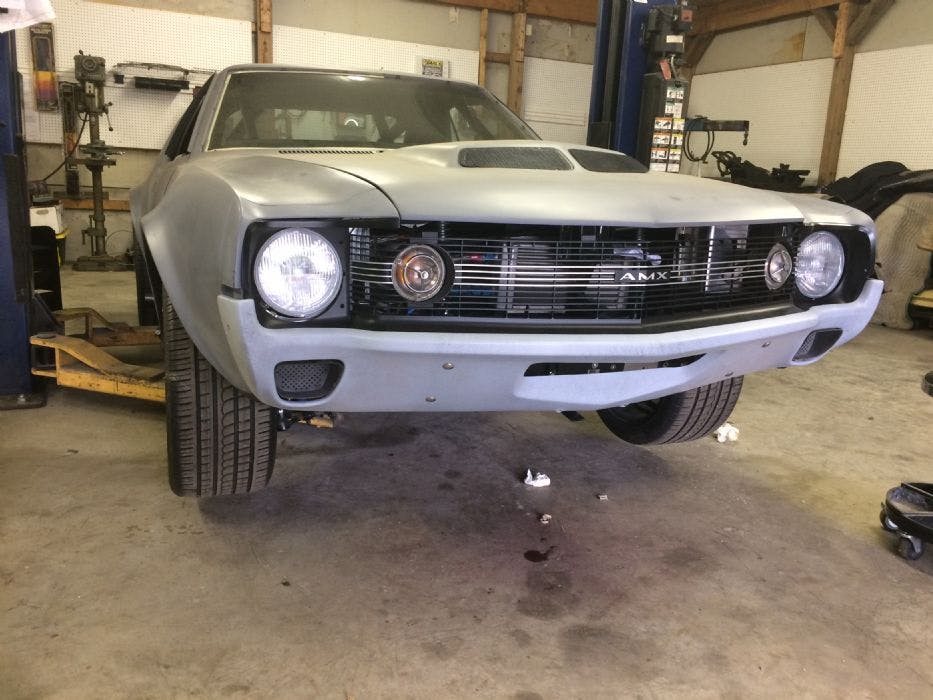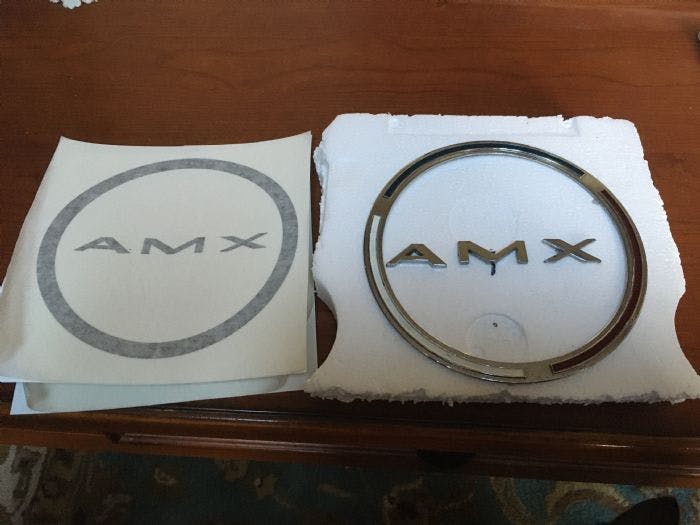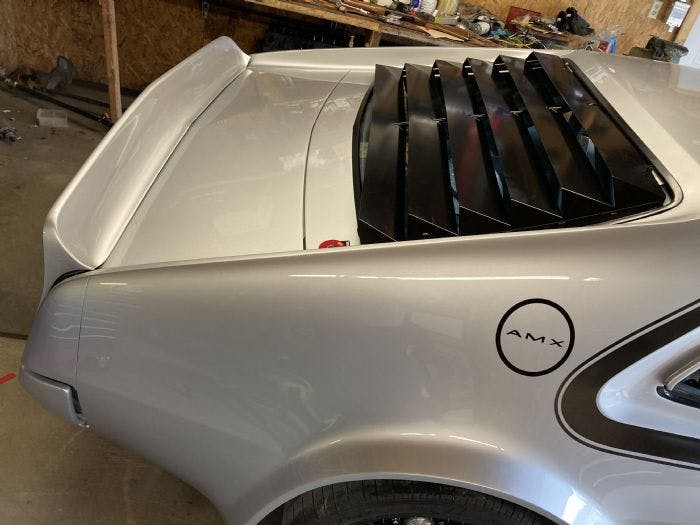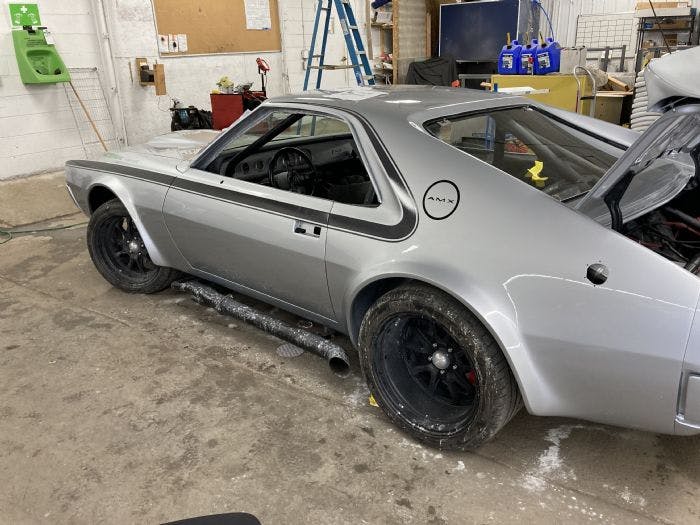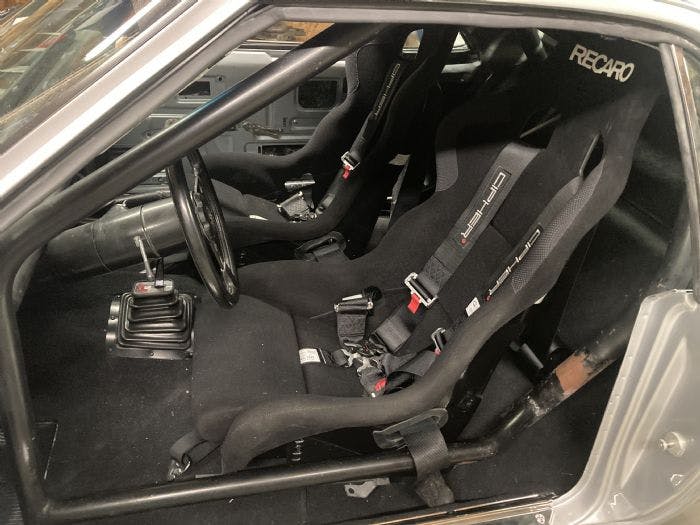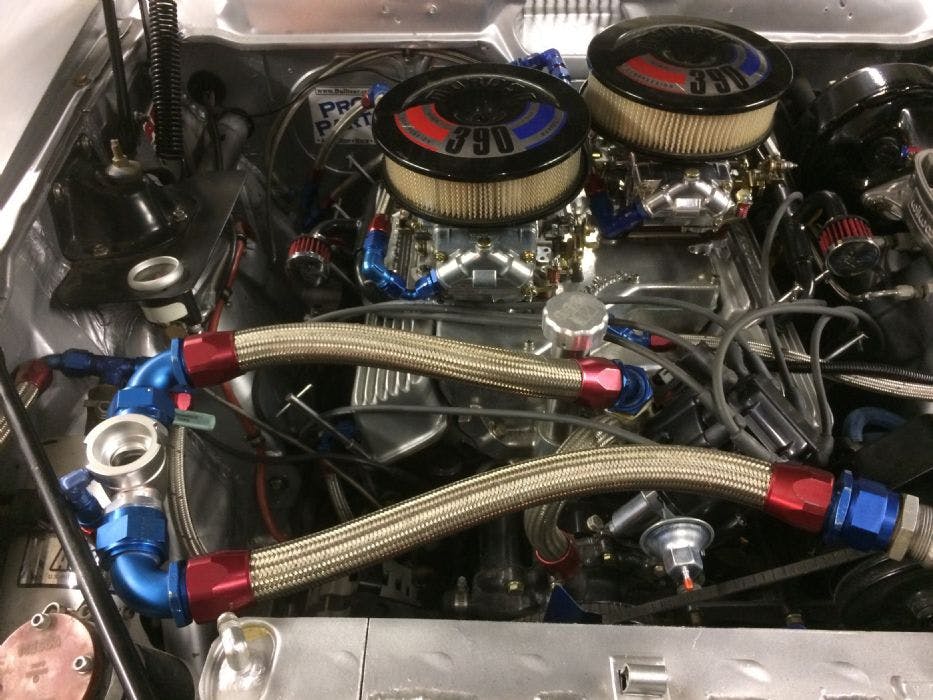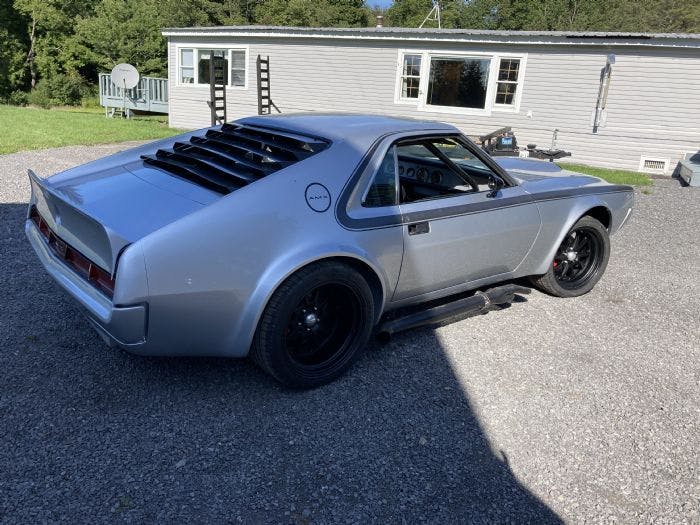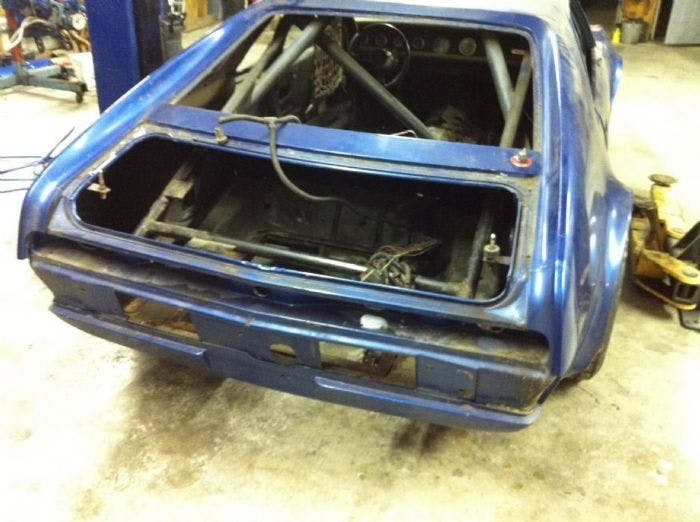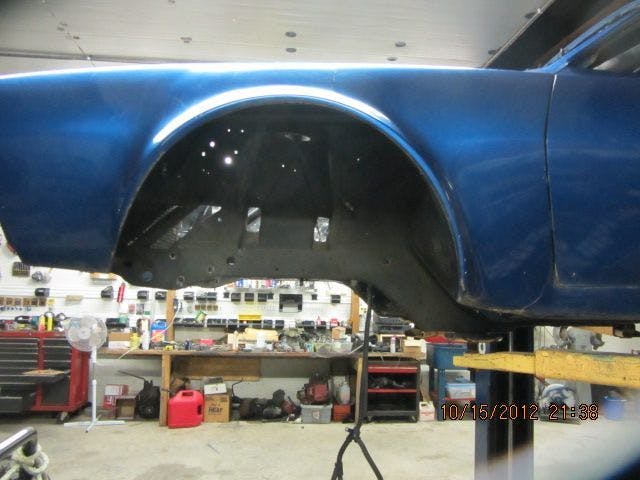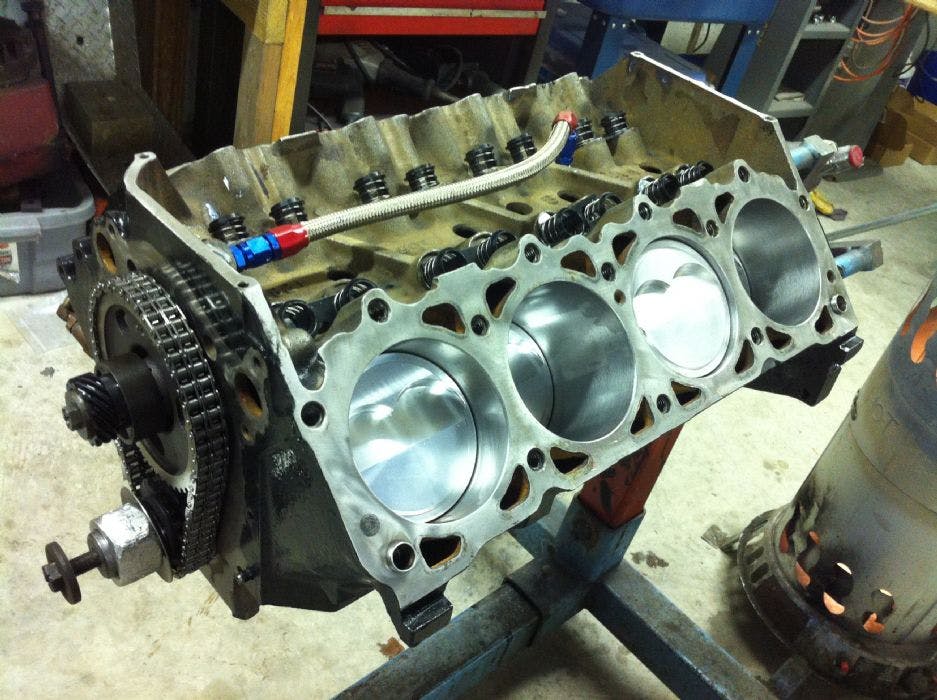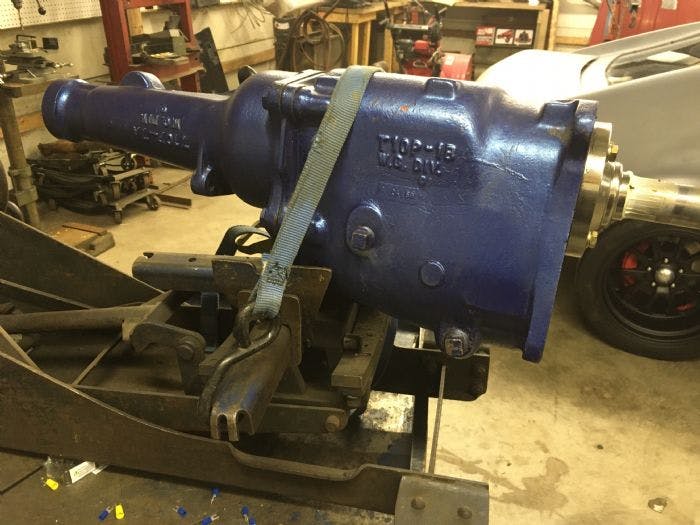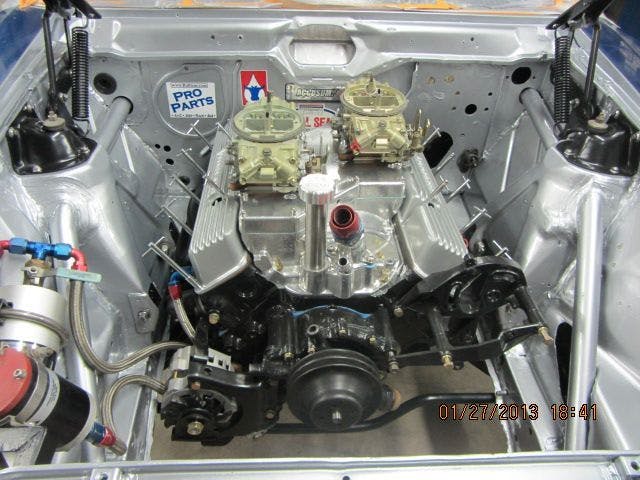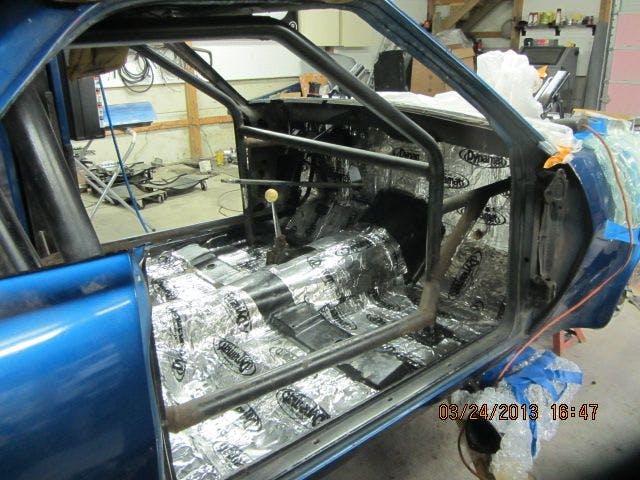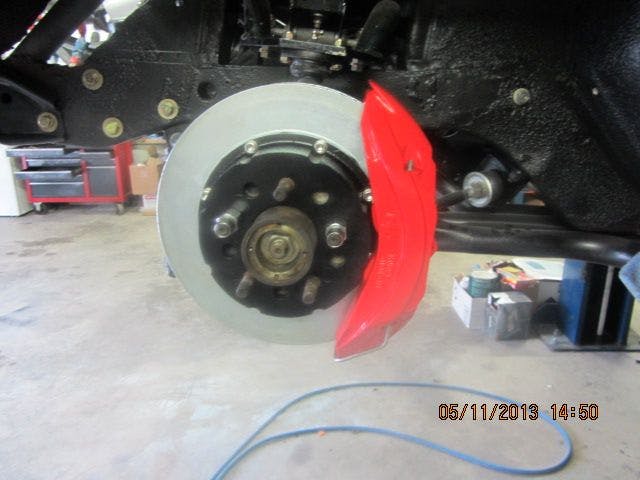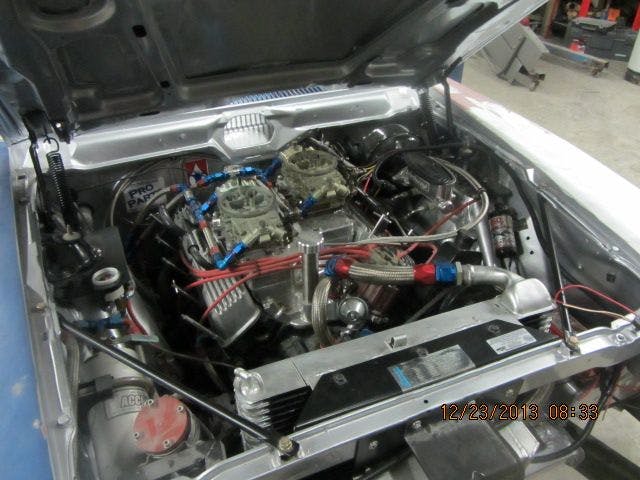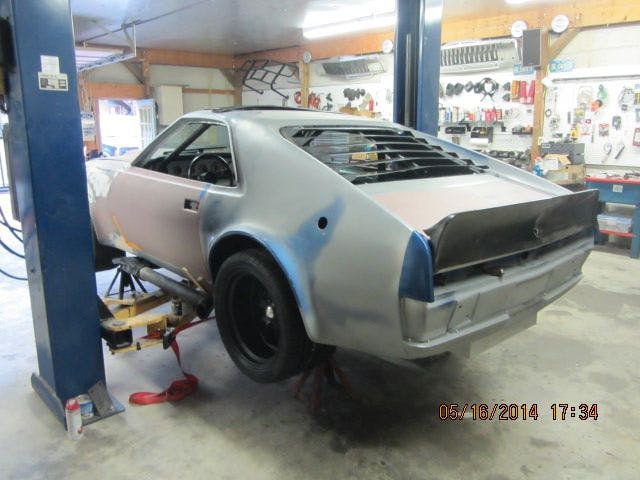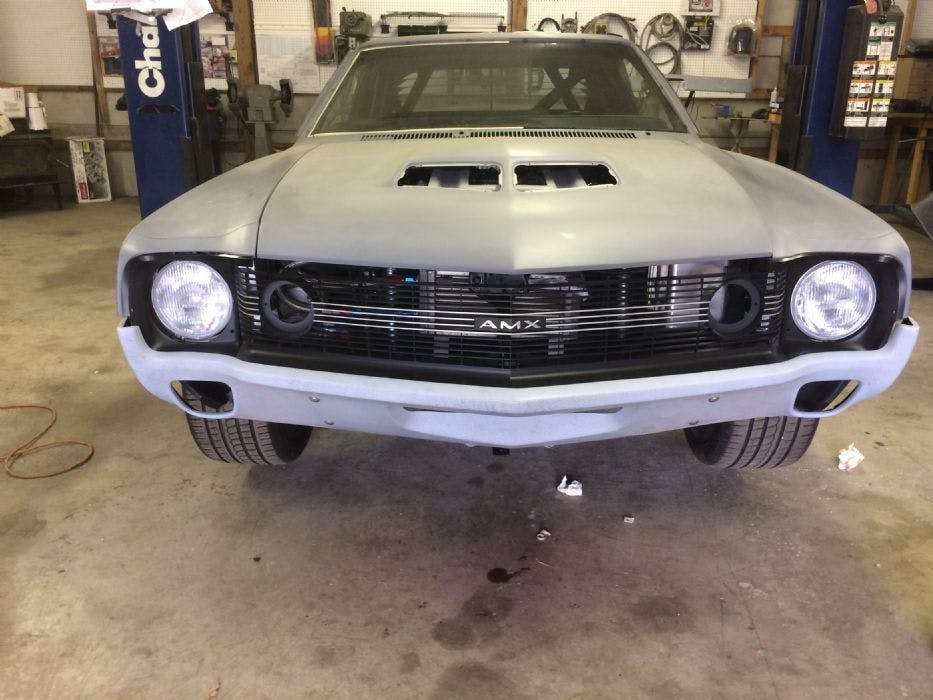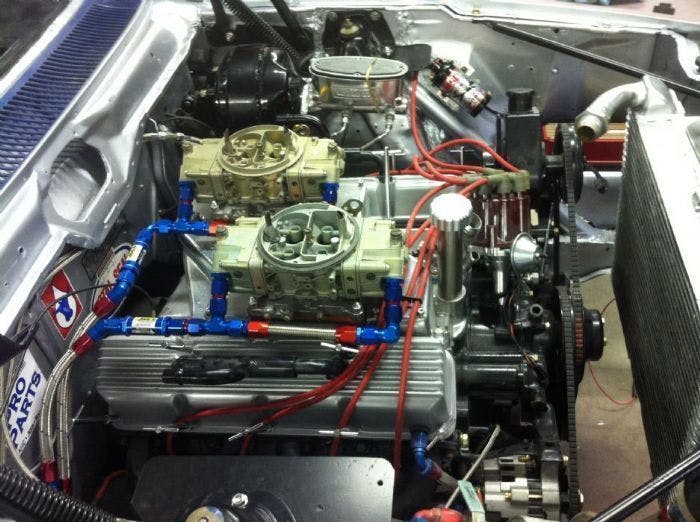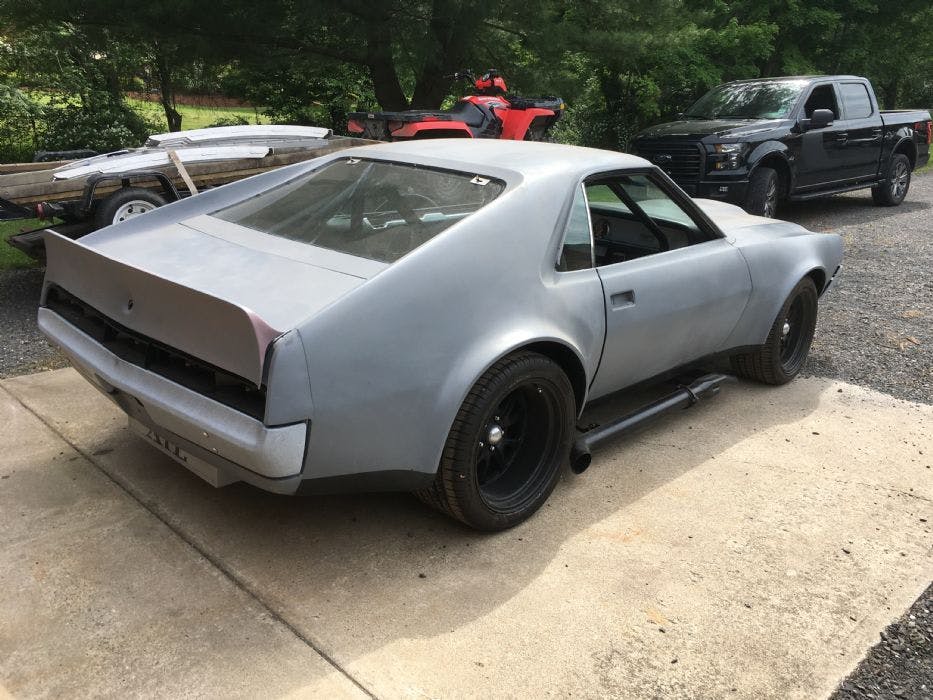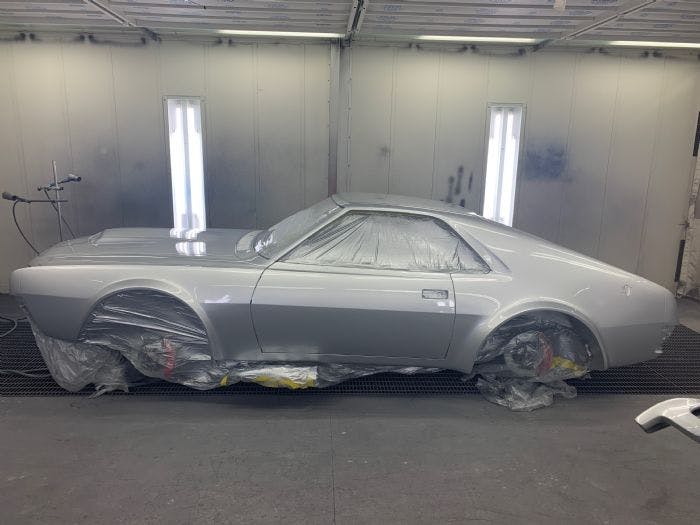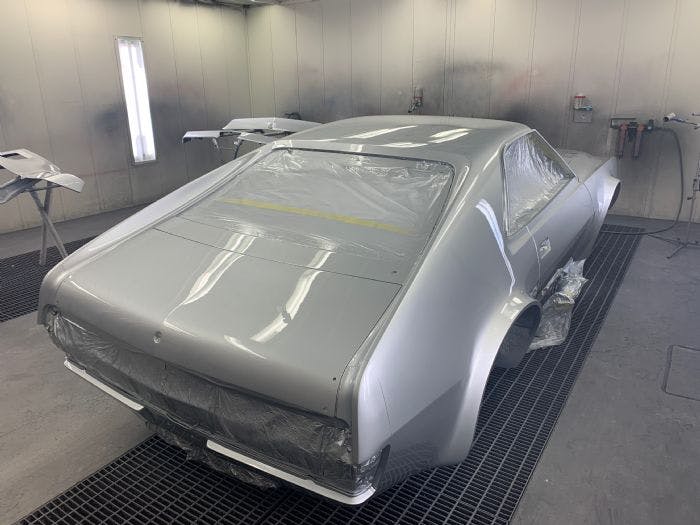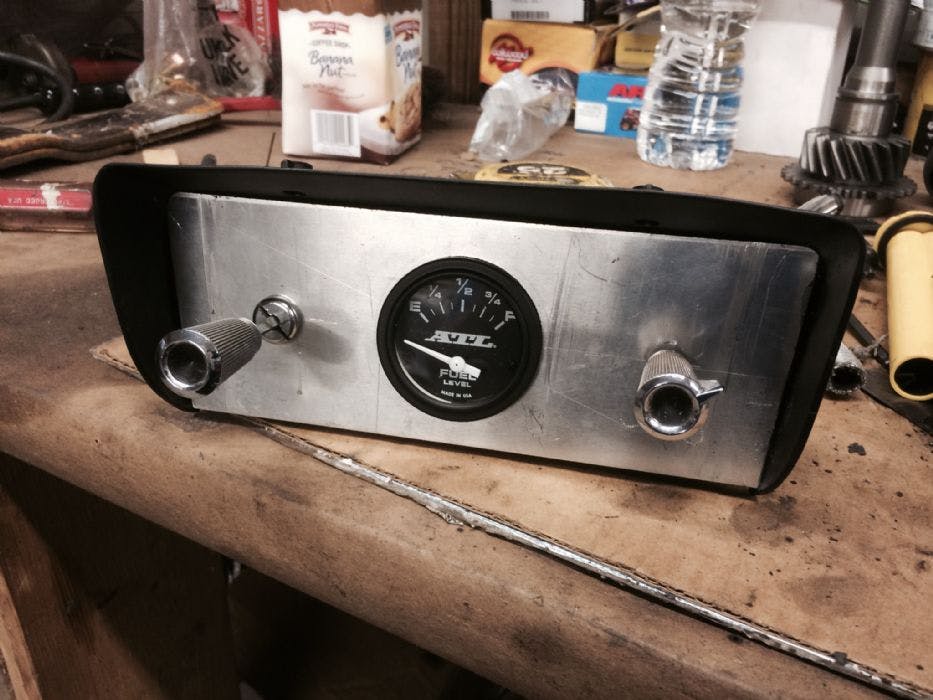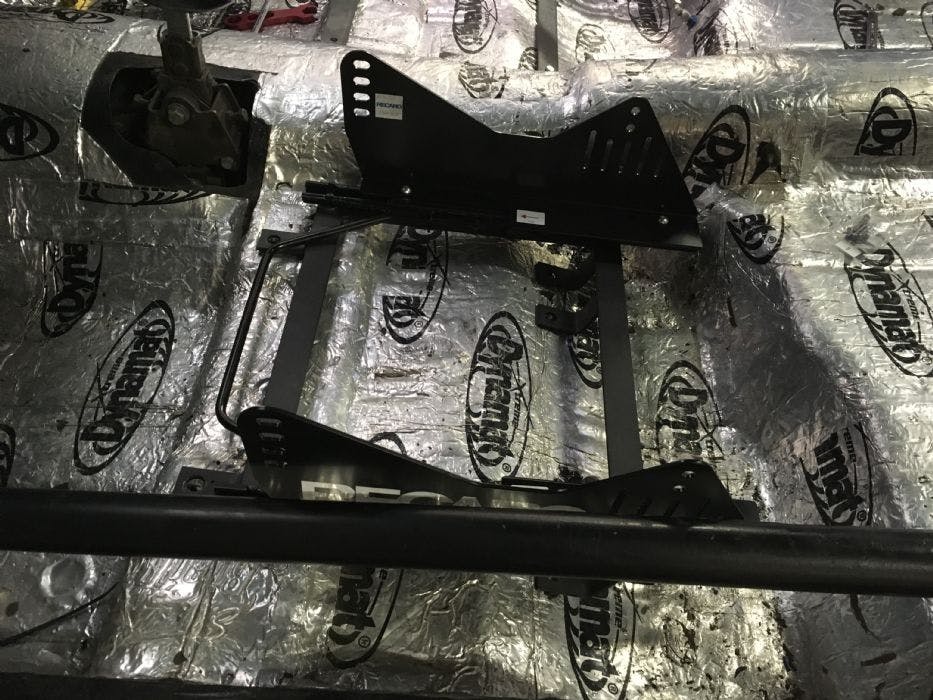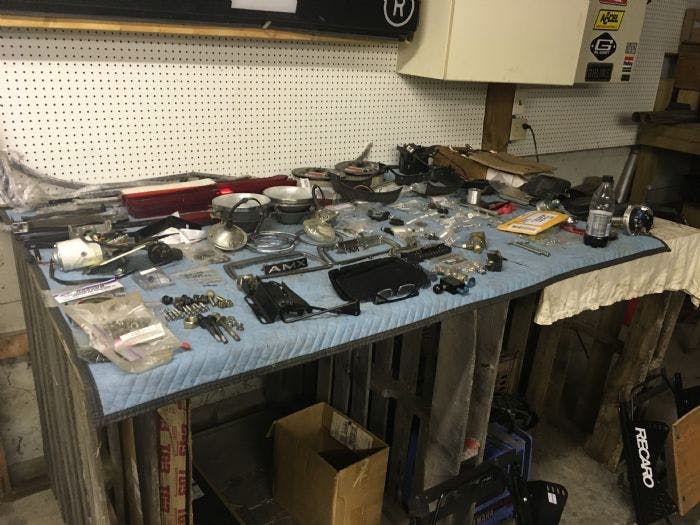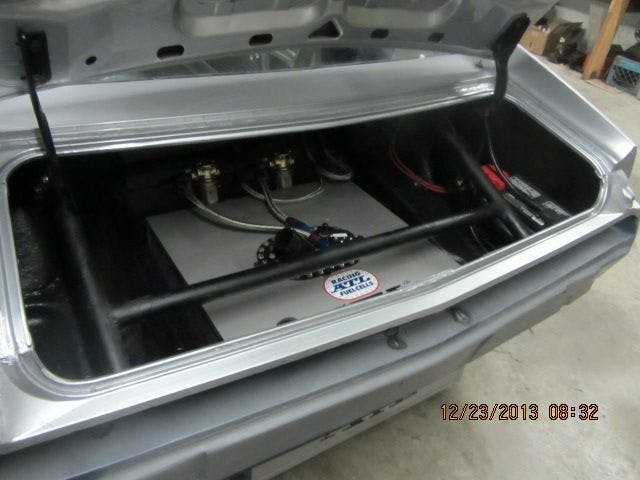This unique AMX SCCA veteran is ready to rumble

When AMC senior manager Frank Lipare opened his garage door in Manhasset, Long Island, to reveal a wide-shouldered, blue AMX, teenage Joseph Belfiore was dumbstruck. It was the mid-1970s, and he had sought out Lipare for advice regarding hopping up his own 1970 AMX. The homebuilt race car before him was the meanest piece of American Motors machinery he’d ever seen. Little did Belfiore know that, decades later, he’d buy Lipare’s car—not once, but twice—and spend eight years restoring it in his own garage.
Lipare and a few other managers built out this specific AMX for SCCA competition in 1970. American Motors Corporation never backed its employees’ road-racing campaign, so the car’s 1970–75 career was an amateur effort of the most honest sort. New York’s Jocko Maggiacomo worked his magic on the car’s V-8 (it’s unclear whether the car originally had the 343- or the 390-cubic-inch engine). Lipare and co. enlisted another Long Island shop, this one specializing in bodywork, to fabricate the car’s bulging fiberglass fenders. The stripped, rollcaged AMX spent most of its five-year road-racing career in the Northeast, at Bridgehampton Race Circuit in New York and Lime Rock Park in Connecticut.
Though the team disbanded in 1975, Lipare couldn’t stay away from the race track for long. Roughly a year later, he and the AMX hit the club racing circuit, revisiting tracks familiar to both of them—Bridgehampton and Lime Rock. Belfiore met Lipare during this phase of the car’s life. The younger man even tagged along to a few track days.
Belfiore’s own AMC obsession began with a street-spec silver 1970 AMX (above). He convinced his father to buy him the silver car when he was in high school. He still had his car in 1982 when he received a phone call from Lipare offering him its racing counterpart. Lipare wanted $10,000, but Belfiore didn’t have it. Six months later, Lipare called again. “How much you got?”
Belfiore couldn’t let this chance slip. He sold his AMX, called up his father and brother-in-law, and bought Lipare’s AMX for $6500.
“I bring it home, it’s race-ready—tires, window net. I made it streetable—headlights, wipers.” He put DOT-legal tires on it and took the AMX street-racing. Instead of the stock cross-ram intake, Belfiore ran a Torker unit and a Holley 850 carb. “Even in road-race trim with the 3.54 [rear] it was a total beast.”
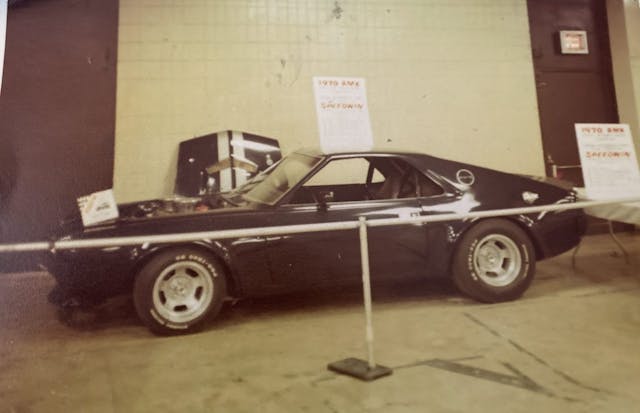
Belfiore loved the attention the racing veteran brought on the streets. “I used to get pulled over by the police, they’d ask, ‘what is this?'”
“Then I did something really stupid,” he says. “I got married.” He sold the AMX in 1987 to a guy who, after “torturing” the car, dumped it in a storage garage. The buyer only contacted Belfiore about the beleaguered AMX when his father, who owned the building in which the AMX sat, decided to sell the facility. Belfiore agreed to shelter the car—”it was a mess”—in 2002, and it sat for ten more years, until Belfiore finally bought the car. “I thought, this car, as bad as it is, has got to be resurrected—I’m gonna do it.”

Thus started an eight-year-long, mostly at-home restoration project. Belfiore’s goal was “to get the beast back on the street again.” He decided on a few modern updates—a power-steering system, MSD electronic ignition, and disc brakes all around—but he wanted to preserve the car’s road-racing roots. Though he left paintwork to a professional shop, Belfiore’s shop was well-equipped for such an extensive restoration. Frank Lipare passed away in 1988 leaving no documented history for the car, but thanks to his tutelage, Belfiore had the AMC know-how to do the AMX justice.
Some seasons, Belfiore made rapid progress. Other times, progress slowed to a shuffle. In April of 2017, the AMX ran for the first time—for 10 minutes, when it shut off with no spark. A month later, Belfiore broke his fibula on a fishing trip. A plate, eight screws, and four months later, he was tackling a cracked oil pan.
In November of 2019, the AMX ran smoothly, had zero leaks and functional brakes, and was on the trailer to the paint shop. After rebuilding the carburetors this September, Belfiore says the project is 95 percent done—he’s fitting some interior clamps and perfecting a belt attachment section of the rollcage.
What Belfiore hadn’t anticipated, however, was the enthusiastic—and helpful—audience the AMX would garner. In 2012, he started a thread on theamcforum.com. Today, it’s a 56-page chronicle of his struggles, his triumphs, and the AMC community’s assistance. One person helped him find the rear window louvers. Another sourced the black C stripe. Still another provided meticulous measurements of the exact location of the AMX decal on the rear quarter panel—thanks to the flared fenders, the factory indentation on Belfiore’s AMX was gone—so Belfiore could fit a pair of AMX decals, carefully patterned after the originals, in their proper place.
Today, the AMX sits proud. It wears a new steel rear bumper, to replace the fiberglass original, and the body is painted in an early-2010s Porsche silver. Under the hood sits a 390-cu-in engine, kept cool by an L88 Corvette radiator and topped with a set of Holley 600 double-barrel carburetors. To make the car more streetable, Belfiore chose a tamer cam than the one he used on the 390 in his street-racing days. The engine’s headers are a custom affair made by Offenhauser for the car’s SCCA days. A set of custom side pipes help tame the monster’s roar enough for residential jaunts.
The powerplant is mated to a Kevlar clutch and a T-10 four-speed gearbox, and the rear end is a Dana 60 paired with 3.54 alloy axles. Vintage Hurst Airheart four-piston calipers clamp down on 12-inch vented brake rotors at all four corners. Belfiore sourced the front suspension from Control Freaks, and ordered 18-inch wheels from Centerline to which he fit Pirelli P Zero rubber.
“It’s really the coolest AMX on the planet,” Belfiore says. “There’s a lot of restored AMXs that are 100-point show cars—and that’s great, I respect it. Mine, being modified and having that kind of history—it really has brought a lot of attention.
“The AMC enthusiasts—they love the car. I’m not gonna race it, just gonna take it to shows and stuff. It’s part of my history.”
